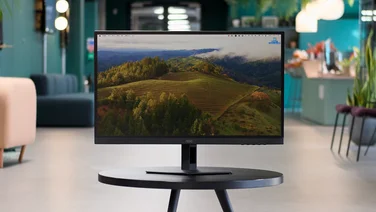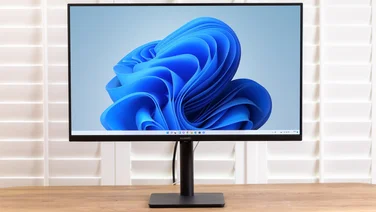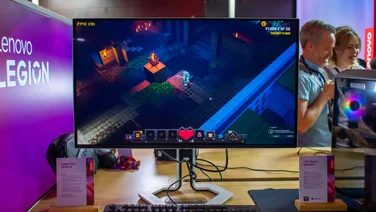To help us provide you with free impartial advice, we may earn a commission if you buy through links on our site. Learn more

Environmental initiatives are essential to any business, regardless of size. There’s never a bad time to take a look at your own commitments – you might find that renewing your dedication to going green improves your desirability, acting as a key differentiator that helps nudge an important contract over the line.
The challenge, though, is often that we simply don’t have the time to invest in more sustainable practices. Luckily, Philips is dedicated to making it quick and easy: simply by investing in a Philips monitor for you or your team, you can plant trees and offset your carbon footprint in a measurable, meaningful way.
Read on to find out how Philips monitors can help you report concrete environmental benefits and just how many trees need to be planted to offset your monitor purchase.
Going green, one tree at a time
Philips understands the importance of measurable environmental impact. It’s easy to throw buzzwords around but much harder to follow through – and harder still to prove the success of your eco-conscious initiatives.
That’s where the partnership with ForestNation comes in. It aims to plant 230 million trees in Tanzania, which will have a substantial impact on both the environment and the local population. By employing locals to raise saplings, prepare land and monitor growth, the project provides jobs; and by providing farmers with fruit and coffee seedlings to be grown, harvested and sold, the project improves income and food security.

Your part in all of this is simple: when you purchase one or more of Philips’ monitors, a portion of the profits goes to ForestNation, so that they can plant trees to offset the CO2 emissions created by the monitors. It’s a straightforward and devastatingly effective way to both shrink your carbon footprint and tangibly measure the positive impact of your eco-friendly initiatives.
The real-world success of this programme is clear after a quick glance at the list of current partners. Major UK organisations, including Network Rail, Birmingham NHS Trust, Accenture, Kellogg’s and AMD have already invested in around 6,550 monitors, resulting in an impressive 8,218 trees planted in the first quarter of 2025 alone.
But if you want unequivocal proof of the benefits, look no further than Philips Monitors’ own Forest, which now contains more than 60,229 planted trees – generating an estimated 6,025 tonnes of oxygen annually.
Truly sustainable technology
It’s not just about offsetting the damage, however. Philips has also found several ways of permanently improving the environmental credentials of its monitors.
Each monitor is designed to maximise energy efficiency without compromising on performance. Impressive power savings are achieved with the help of a few clever energy-saving features:
The LightSensor measures ambient light levels and adjusts the intensity of the backlight (ie. the brightness of your screen) to avoid energy wastage, particularly in artificially lit environments. You can expect to see savings within the first year, according to Philips.

The PowerSensor keeps track of whether there’s a person sitting in front of the screen – if it senses an empty desk, it will switch off the monitor, conserving energy and (incidentally) improving the lifespan of the panel. You could see energy savings of up to 80%, says Philips – nothing to be sniffed at. The new PowerSensor 2 not only dims the screen when no one is in front of it, but it also puts the PC/laptop into sleep mode when the OSD setting is set to “User” in Windows 11.

The Zero-Watt Hard Switch is perhaps the most straightforward way of reducing energy wastage. Hit this switch on the rear of the monitor to totally disconnect it from the mains power supply and guarantee that the monitor won’t use a single iota of unnecessary energy.
Philips’ commitment to minimising its impact on the environment extends beyond power consumption, however. It also manufactures some of the most sustainably produced monitors on the market. Each monitor is packaged in 100% recyclable materials – goodbye, nasty styrofoam – and select models in the Philips range are constructed of up to 85% post-consumer recycled plastics. All Philips monitors are RoHS compliant, with a low-halogen, mercury-free design effectively reducing the risk of exposure to harmful substances.
Still on the fence?
If you’re still not sure whether a Philips monitor is the right call, why not try the Philips Monitor Energy Calculator? You can use it to compare the brands’ own monitor line-up to find the best possible energy efficiency and cost savings, or if you know the usage specs of your current monitor, you can compare that against the closest Philips rival.
For reference, these are Philips’ most environmentally-friendly monitors – that is, they come in a 100% recyclable container and use both LightSensor and PowerSensor (or PowerSensor 2 by the 24B2G5601 and 27B2G5601 models) technologies. Prices start at £200 from Amazon:
- Philips 27B2G5601: 27in, 2,560 x 1,440, IPS panel, 100 Hz, USB-C with up to 96 W Power Delivery
- Philips 24B2G5301: 24in, 1,920 x 1,080, IPS panel, 100 Hz, USB-C with up to 96 W Power Delivery
- Philips 24B2G5200: 24in, 1,920 x 1,080, IPS panel, 100 Hz
- Philips 27B2G5500: 27in, 2,560 x 1,440, IPS panel, 100 Hz
- Philips 27B2G5200: 27in, 1,920 x 1,080, IPS panel, 100 Hz
- Philips 272B1G: 27in, 1,920 x 1,080, IPS panel, 75 Hz
- Philips 242B1G: 24in, 1,920 x 1,080, IPS panel, 75 Hz
Calculate the environmental impact of your monitor purchase using the Philips Monitor Energy Calculator.







